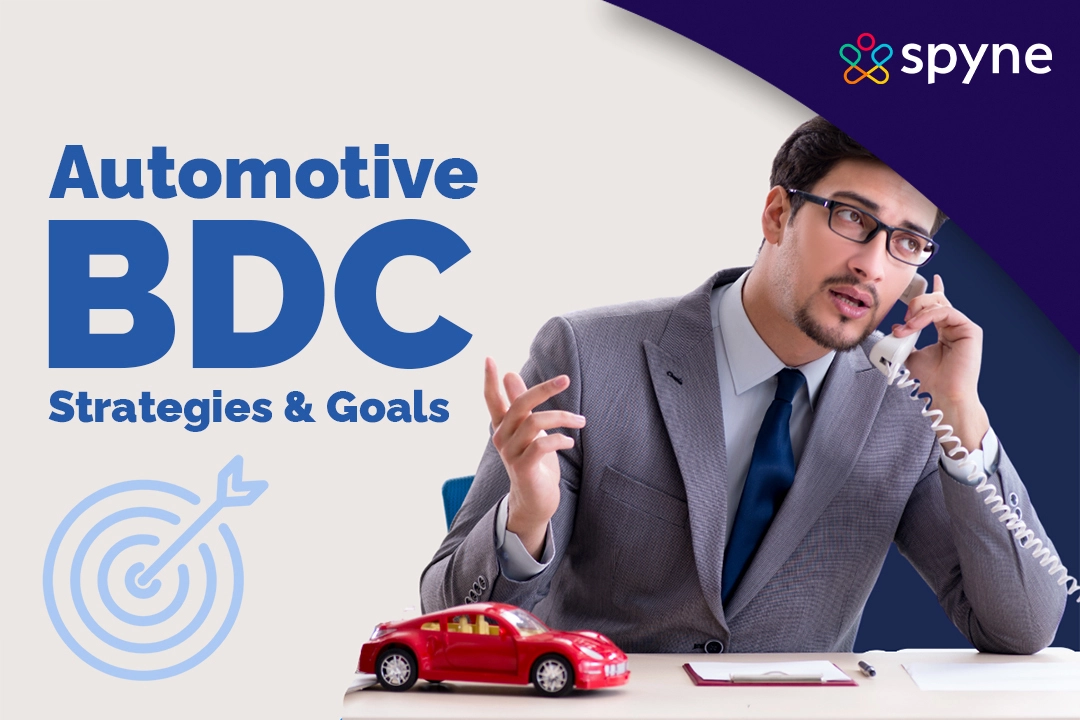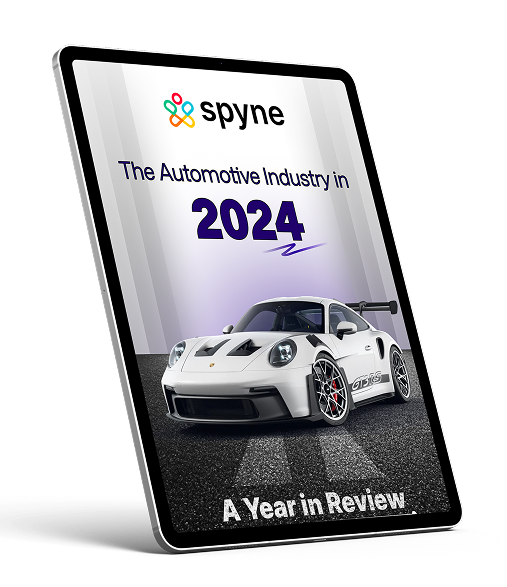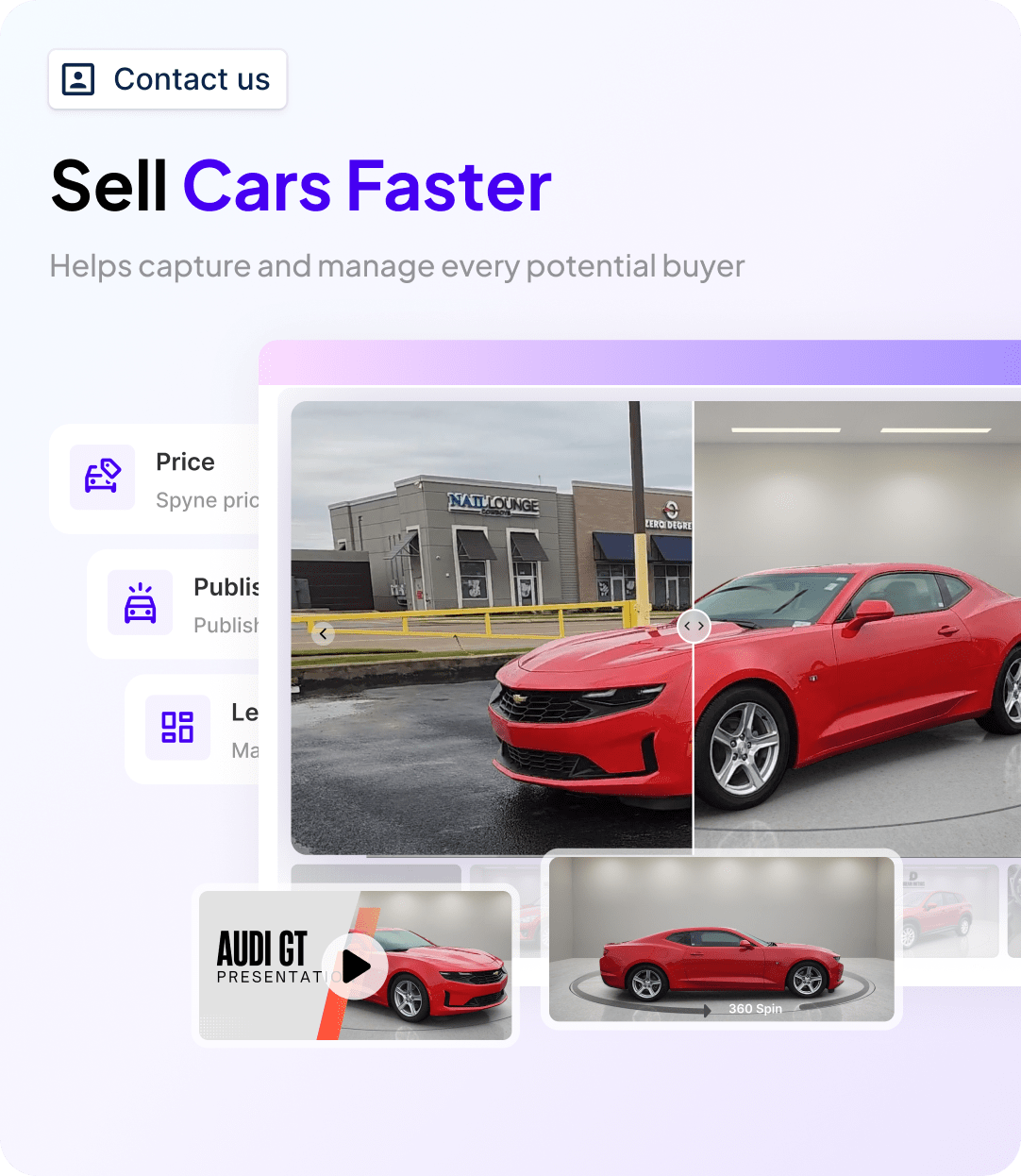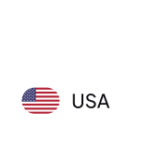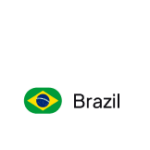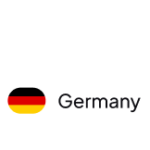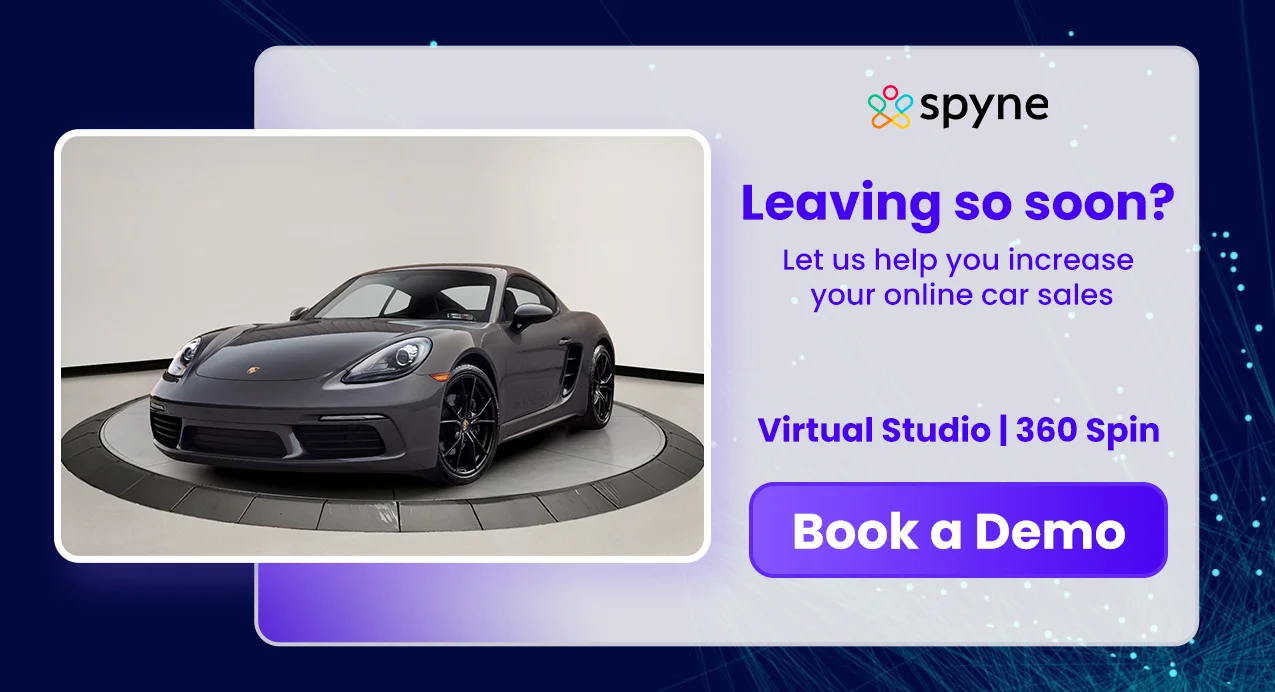Walk into any car dealership today, and you’ll notice a change. The phone rings less than it used to, but the CRM dashboard is full of internet leads. Customers are sending inquiries at midnight, comparing prices on three different dealer websites at once, and expecting a response within minutes. The traditional sales floor model, which waits for people to walk in, just doesn’t cut it anymore.
That pressure to respond quickly and consistently is exactly why most growing dealerships turn to an automotive BDC, or Business Development Center. A BDC works a bit like the dealership’s traffic controller. While salespeople are busy juggling walk-ins and test drives, the BDC team keeps an eye on the phones and inbox. Their job is to ensure that someone is always available to pick up and that no customer inquiry gets lost under the day’s chaos.
Dealerships that rely on a BDC usually see two things happen: more appointments show up, and fewer leads slip through the cracks. In a fast-moving industry where a missed follow-up can cost the dealership a loss of a buyer, that difference can add up to hundreds of cars sold over the course of a year.
Automotive BDC: What It Is and Why It Matters?
An automotive BDC, or Business Development Center, is the department within a dealership that looks after customer communication. Its role is to respond to online leads, follow up on calls, and manage service reminders so buyers aren’t left waiting.
Picture a car buyer browsing online at midnight. They see an SUV, click “check availability,” and within minutes, the BDC has already responded. The first conversation isn’t about forcing a sale but about answering questions and booking an appointment. That small step makes the buyer feel noticed.
Service works the same way. A BDC representative might remind a driver about maintenance, check in on a lease coming due, or even suggest a trade-in.
The real value lies in consistency. Without a BDC, customer follow-up depends on whether a salesperson has the time or energy that day. With a BDC, dealership customer communication is systematic, tracked, and nearly impossible to overlook.
What Does a BDC Representative Do in a Car Dealership?
The core of any BDC is its people. Representatives handle the calls, emails, and online leads that would otherwise slip past busy staff.
On a normal day, BDC representatives:
- Answer and return customer calls.
- Confirm test drives and service appointments.
- Update CRM notes and follow up with prospects.
This work sounds simple, but in a dealership, it’s what keeps deals moving. A finance manager tied up with paperwork can’t call back every lead. A service advisor in the middle of a closure may miss calls. A BDC call team fills that gap through customer follow-ups and lead handling, reducing the chances of missed sales.
Let’s take an example: a buyer clicks “get today’s price” on a listing. Instead of waiting hours, a representative responds quickly, confirms availability, and schedules a test drive. By the time the buyer arrives, they already feel acknowledged.
The same applies to Service BDC. Representatives call about overdue maintenance, recall notices, or seasonal promotions. This keeps service bays filled and customers connected.
To stay consistent, many dealers rely on structured BDC phone scripts and ongoing coaching. They also follow proven automotive BDC tips to maximize conversions and ensure that every conversation moves the lead closer to an appointment.
At the end of the day, BDC representatives are the steady bridge between customers’ interests and action. They don’t close the sale themselves, but without them, a lot of opportunities never even reach the sales desk.
Pros and Cons of an Automotive BDC
Running a BDC inside an automotive dealership is a lot like adding a new department to the business. It has obvious benefits, but there are drawbacks as well. Before determining how much time, money, and staff should be allocated to it, it is critical to fully understand both sides.
The Pros
- Quick, consistent responses: Buyers often send inquiries to multiple dealers. The one who answers first with useful information usually wins the appointment.
- Focused interactions: Salespeople can focus on customer-facing work while the BDC handles the early back-and-forth.
- Uninterrupted service operations: Calls about recalls, oil changes, or promotions keep bays booked and customers coming back.
The Cons
- Additional costs: Salaries, training, and software can burden smaller stores. Dealerships need to measure return carefully.
- Risk of poor execution: If representatives sound robotic or take too long to reply, buyers lose interest fast.
- Handoff issues: If the representative sets an appointment but sales doesn’t follow through, customers feel passed around. This can create tension inside the store too.
Finding Balance
A BDC works best when it’s part of the daily process, not an extra layer. Clear training, open communication, and accountability between sales, service, and BDC teams make the difference. To measure ROI, dealers often track automotive BDC metrics. When all of those elements are in place, the BDC pays off by keeping more leads moving and converting them into real appointments.
Sales BDC vs. Service BDC: What’s the Difference?
BDC operations in dealerships typically fall into two categories: sales and service. While both handle communication, the former is geared toward generating new sales, and the latter toward keeping service lanes full.
Sales BDC
This team’s priority is speed. When someone calls, fills out an online form, or sends a quick message about a vehicle, the Sales BDC steps in. Questions like “Is this car still available?” or “Can I bring in my trade this weekend?” are answered quickly, and the conversation is directed toward booking an appointment. They’re not expected to close the deal during that exchange, but convincing the buyer to walk through the door is the real win. In a market where buyers often contact three or four dealerships at once, being the first to respond usually means being the first to earn consideration.
Service BDC
Unlike sales, the service BDC focuses on retention. The service BDC keeps customers engaged long after the sale. A quick call about a missed appointment, a reminder for routine service, or help with a recall keeps the connection alive. Over time, these small interactions build familiarity. When drivers think about replacing their vehicle, the dealership that has stayed in touch often becomes their first stop. Some stores even rely on automotive BDC companies to handle either function.
In-House BDC vs. Outsourced Automotive BDC: Which Works Best?
Dealers usually face one big decision while setting up a BDC: whether to build it inside the store or let someone else handle it. Understanding the trade-offs in outsourced BDC vs in-house BDC helps dealers choose the right model.
With an in-house BDC, the team is on payroll. Managers can train them the way they want, change scripts quickly, and walk down the hall if something needs fixing. The control is great, but the costs might be high, including salaries, benefits, extra desks, and the constant need for training, which all add up. For large dealers, it’s doable. For smaller rooftops, it can stretch their budget thin.
An outsourced automotive BDC shifts the load to a third-party company. Outsourcing can bring outsourced BDC benefits, such as lower overhead and usually broader coverage, especially for smaller dealerships that need after-hours coverage without adding staff. However, the dealership might have to give up some control. If the external team isn’t on the same page as the dealership, the handoff can be chaotic. This leads to issues like calls that feel a little scripted at times, and customers immediately notice such shortcomings.

AI + Human Agents: The Future of Automotive BDC Operations
Buyers don’t have fixed hours to hunt for their dream vehicle. Someone might browse late at night, open the chat, and expect a quick response. That is something an AI receptionist for dealerships can deliver instantly.
AI agents take on the first layer of work. They handle routine questions like store hours, directions, or basic vehicle details, and they can pre-qualify leads by asking about budget, trade-in, or model preferences. The major advantage of AI BDC software is speed in addressing customer inquiries.
But once the conversation turns personal, one that talks about monthly payments, warranties, or whether a vehicle has enough room for car seats, a person needs to step in. Human BDC staff bring empathy, persuasion, and dealership knowledge.
The mix of automation with people creates a modern BDC sales process that balances speed with personal care. AI filters and sorts leads, so representatives don’t waste time chasing low-value inquiries. Human agents then focus on meaningful conversations that drive sales.
This setup reduces costs, keeps buyers engaged at any time of day, and ensures the dealership’s voice stays consistent. For many dealers, this hybrid BDC setup has become less of an experiment and more of a new baseline for how a modern BDC should operate.
How Automotive BDC Teams Manage and Nurture Leads?
BDC teams are built to keep customer conversations moving. This kind of structured automotive lead management helps dealerships stay in front of buyers until they’re ready to buy. Here’s how auto dealership BDCs handle leads:
- Quick first response: Leads come in through calls, online form responses, or third-party sites. The faster the reply, the better. Dealers know that the first store to answer often wins the customer.
- Right message at the right stage: Early buyers get information like model comparisons or feature highlights. Those closer to buying hear about trade-ins, financing, or available inventory.
- Multiple touchpoints: BDC representatives don’t stick to one channel. They’ll mix calls, emails, and texts, depending on what the buyer responds to.
- Steady follow-ups: Many buyers go quiet for a while. A BDC doesn’t drop them; instead, it keeps light contact going to increase dealership BDC effectiveness so that the dealer stays at the top of the customer’s mind.
- Appointment focus: The goal isn’t closing the deal over the phone. It’s booking a meeting in the showroom where salespeople can finish the job.
With tools like BDC CRM integrations that streamline workflows by connecting calls, emails, and notes in one view and the right execution, this system ensures fewer leads fall through the cracks and more customers actually show up with readiness to buy.
Does Your Dealership Need a BDC? Signs & Evaluation Checklist
Not every dealership needs a full-fledged BDC on day one. The decision depends on where the store is in its growth cycle and how well existing staff handle customer touchpoints.
Some signs point clearly toward needing one, such as:
- Missed calls and slow replies: If phones go unanswered or online leads wait hours for a response, sales are leaking out of the funnel.
- Overworked sales staff: Representatives responsible for test drives and paperwork often push follow-ups to the bottom of the pile. That’s revenue left on the table.
- Inconsistent customer experience: One buyer may get a quick call back, another might wait days. That differing service damages the brand reputation.
On the other hand, smaller stores with lower traffic might hold off. If a team can personally manage every lead without stretching too thin, a BDC may feel like an unnecessary expense.
For many dealerships, a middle path works best. A small in-house setup or a virtual automotive BDC for overflow can solve bottlenecks without taking on the full cost of a large department.
Ultimately, the choice comes down to whether the dealership can ensure fast, consistent communication. If not, it’s the right time to invest in a BDC before competitors grab those lost sales opportunities.
5 Essentials for Setting Up a Successful Automotive Sales BDC
A sales BDC can only work if the foundation is strong. Dealers who want results should make sure these five pieces are in place:
- Speed to lead: The first few minutes after an inquiry comes in, decide whether you win or lose the customer. If your team waits, another dealer answers first, and usually books the appointment. This is why speed to lead is crucial for the sales BDC.
- Simple, repeatable process: Representatives shouldn’t be left guessing. A rough script draft, a call outline, and a clear schedule for follow-ups help keep things consistent without sounding robotic.
- Effective training: A BDC representative isn’t expected to close deals, but they should know enough about discounts, financing, and trade-ins to hold a confident conversation. That confidence builds trust.
- Consistent follow-up: Many buyers go cold after the first chat. The stores that win are the ones that maintain a steady flow of interactions until the buyer is ready.
- Smooth handoff to sales: Nothing destroys momentum like repeating the same details twice. Sales staff should pick up right where the BDC left off, so the customer feels the dealership is aligned.
When all five click together, the BDC stops being just a call center and becomes the backbone of automotive sales growth.
How to Improve Your Dealership’s BDC Performance?
Even the best-run BDCs can slip into routines that don’t serve customers well. Most BDC teams don’t fail because of a lack of effort but because of small habits that go unchecked. A few small changes often make the biggest difference:
- Audit the customer journey: Start with the basics. Call into your own store like a mystery buyer. Fill out a lead form online. If it takes hours to hear back or the reply feels scripted, that’s exactly what real customers are experiencing.
- Use minimal communication tools: Juggling three different platforms for calls, texts, and emails slows representatives down. A single system that tracks everything keeps the team focused on conversations instead of hunting for notes.
- Refresh scripts regularly: The best scripts don’t sound like scripts at all. Representatives should be able to adjust wording so the talk feels natural and not rehearsed. Long wait times are a clear giveaway for buyers.
- Invest in coaching, not just training: Training doesn’t end after the first week. The strongest BDCs review calls, practice objections, and fine-tune tone regularly. Coaching is what transforms average representatives into top performers.
- Blend technology with the human touch: AI is useful for covering late-night chats or answering ‘what’s in stock’ questions. But the follow-up still needs a human touch, because customers notice when every line sounds robotic.
Dealers who tighten up these small details and choose the right BDC company often find that their BDC stops being a cost center and turns into one of the biggest growth drivers for the store.
Streamlining Automotive BDC Operations With Spyne
Most dealerships don’t miss leads because of limited inventory or weak pricing, but because nobody answered fast enough. Spyne’s automotive BDC software alternative is designed to plug that gap. It keeps the phones, chat, emails, and web leads moving even when the sales floor is tied up.
What it actually does:
- Quick replies at any hour: The moment a buyer leaves their details online, Spyne’s automotive chat software shoots back a response right away. No unnecessary wait, no losing them to the dealer down the street.
- Proactive outbound calling: Instead of waiting for buyers to reach out, AI call bot for dealerships by Spyne triggers timely outbound calls for things like missed inquiries, service reminders, or trade-in prompts. This keeps the dealership top of customers’ minds and helps turn quiet leads into active conversations.
- Filters the noise: Spyne’s system goes beyond basic screening. It guides each inquiry from greeting to needs assessment, budget checks, trade-ins, and even early finance talks, handing sales teams well-qualified leads.
- Smarter lead scoring: Spyne’s AI lead scoring for car dealerships automatically ranks and tags leads, so your team can focus on high-intent buyers first. This way, sales representatives spend their time on the opportunities most likely to close.
- Simple numbers that matter: Dealers can track how fast representatives respond, how many appointments show up, and where leads are stalling. It’s the kind of reporting managers actually use, not a spreadsheet they’ll ignore.
Dealers who rely on Spyne’s blend of automation and human support boost car sales and generate higher ROI. For broader engagement strategies, integrating conversational AI ensures every buyer is answered, every time.
Conclusion
For car dealerships today, having an automotive BDC isn’t optional. It’s what keeps phones answered, chats replied to, and online leads moving before they drift to another store. Some teams handle it in-house, others outsource, and many now lean on AI support.
However, the purpose doesn’t change, i.e., keeping every buyer engaged and guiding them to the sales floor without delay. Technological advancements like AI agents can improve the process, but it works best when real humans who understand the pace and pressure of car sales are involved.
Today, a BDC is no longer an add-on but the system that keeps sales and service consistent. Tools like Spyne’s auto BDC help teams cut delays and keep buyers moving from first interest to final deal. To give your buyers one more reason to choose you, book a demo with us now!

